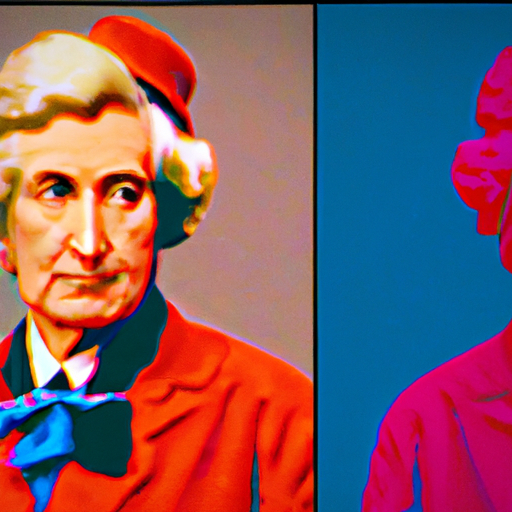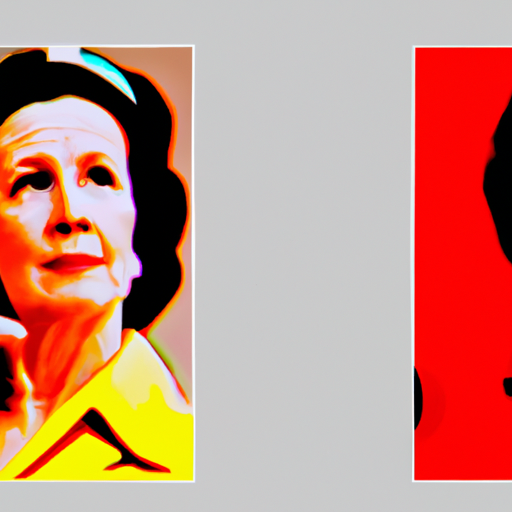
-
Table of Contents
- Mastering Visual Hierarchy in Graphic Composition
- Understanding Visual Hierarchy
- Applying Visual Hierarchy in Graphic Composition
- 1. Establish a Clear Focal Point
- 2. Create a Visual Hierarchy with Size
- 3. Use Color Strategically
- 4. Utilize Contrast
- 5. Embrace Whitespace
- 6. Pay Attention to Typography
- Case Studies: Successful Implementation of Visual Hierarchy
- 1. Apple’s Product Packaging
- 2. The New York Times’ Front Page
- Key Takeaways
Mastering Visual Hierarchy in Graphic Composition

When it comes to graphic design, one of the most important principles to understand and apply is visual hierarchy. Visual hierarchy refers to the arrangement and organization of elements in a design to guide the viewer’s attention and create a sense of order. By mastering visual hierarchy, designers can effectively communicate their message, enhance user experience, and create visually appealing compositions. In this article, we will explore the key principles and techniques of visual hierarchy and provide valuable insights on how to apply them in graphic composition.
Understanding Visual Hierarchy
Visual hierarchy is the order in which the elements in a design are perceived by the viewer. It helps guide the viewer’s attention and prioritize the information presented. By establishing a clear visual hierarchy, designers can ensure that the most important elements are noticed first, while secondary and tertiary elements are perceived in a logical and organized manner.
There are several factors that contribute to visual hierarchy:
- Size: Larger elements tend to attract more attention than smaller ones. By varying the size of elements, designers can create a clear distinction between different levels of importance.
- Color: Bright and contrasting colors can draw attention to specific elements. By using color strategically, designers can guide the viewer’s gaze and emphasize important information.
- Contrast: Contrast refers to the difference in visual properties such as color, size, shape, or texture. By creating contrast between elements, designers can make certain elements stand out and create a clear visual hierarchy.
- Whitespace: Whitespace, also known as negative space, is the empty space between elements. By using whitespace effectively, designers can create a sense of balance and separation, allowing important elements to stand out.
- Typography: The choice of fonts, font sizes, and font styles can greatly influence the visual hierarchy. By using bold or italic fonts for important information, designers can make it more prominent.
Applying Visual Hierarchy in Graphic Composition
Now that we understand the key principles of visual hierarchy, let’s explore how to apply them in graphic composition:
1. Establish a Clear Focal Point
The focal point is the most important element in a design, and it should immediately capture the viewer’s attention. By using size, color, or contrast, designers can create a clear focal point that stands out from the rest of the composition. For example, in a poster advertising a music concert, the artist’s name or the event’s date and venue could be the focal point.
2. Create a Visual Hierarchy with Size
Size is one of the most effective ways to establish a visual hierarchy. By making important elements larger than others, designers can ensure they are noticed first. For example, in a website’s navigation menu, the most important page or section could be represented by a larger button or tab.
3. Use Color Strategically
Color can be a powerful tool in creating visual hierarchy. By using bright or contrasting colors for important elements, designers can make them stand out. However, it’s important to use color sparingly and avoid overwhelming the composition. A good practice is to limit the use of bright colors to a few key elements.
4. Utilize Contrast
Contrast is another effective way to establish visual hierarchy. By creating contrast between elements, designers can make certain elements stand out. This can be achieved through differences in color, size, shape, or texture. For example, in a magazine layout, a headline could be set in a bold and large font to create contrast with the body text.
5. Embrace Whitespace
Whitespace is an essential element in graphic composition. By using whitespace effectively, designers can create a sense of balance and separation, allowing important elements to stand out. Whitespace can also improve readability and make the design feel less cluttered. For example, in a brochure, using ample whitespace around text and images can make the content more digestible.
6. Pay Attention to Typography
Typography plays a crucial role in visual hierarchy. By using different font sizes, styles, and weights, designers can guide the viewer’s attention and emphasize important information. For example, in a poster, the event’s headline could be set in a large and bold font, while supporting details are presented in a smaller and lighter font.
Case Studies: Successful Implementation of Visual Hierarchy
Let’s take a look at some real-world examples of successful implementation of visual hierarchy:
1. Apple’s Product Packaging
Apple is known for its minimalist and elegant product packaging. By utilizing whitespace, clean typography, and a clear focal point, Apple creates a strong visual hierarchy that emphasizes the product. The use of contrasting colors and minimalistic design elements further enhances the visual hierarchy and communicates the brand’s premium image.
2. The New York Times’ Front Page
The front page of The New York Times is a great example of effective visual hierarchy in newspaper design. The headlines are set in large and bold fonts, immediately capturing the reader’s attention. The use of contrasting colors and strategic placement of images further guide the reader’s gaze and create a clear visual hierarchy.
Key Takeaways
Mastering visual hierarchy is essential for creating effective and visually appealing graphic compositions. By understanding the principles of visual hierarchy and applying them strategically, designers can guide the viewer’s attention, communicate their message, and enhance user experience. Here are the key takeaways:
- Visual hierarchy is the arrangement and organization of elements in a design to guide the viewer’s attention.
- Factors that contribute to visual hierarchy include size, color, contrast, whitespace, and typography.
- Establish a clear focal point to capture the viewer’s attention.
- Create a visual hierarchy with size, using larger elements for important information.
- Use color strategically to make important elements stand out.
- Utilize contrast to create distinction between elements.
- Embrace whitespace to create balance and separation.
- Pay attention to typography and use different font sizes, styles, and weights to guide the viewer’s attention.
By mastering visual hierarchy, designers can elevate their graphic compositions and effectively communicate their message. Understanding the principles and techniques discussed in this article will empower designers to create visually engaging and impactful designs.
